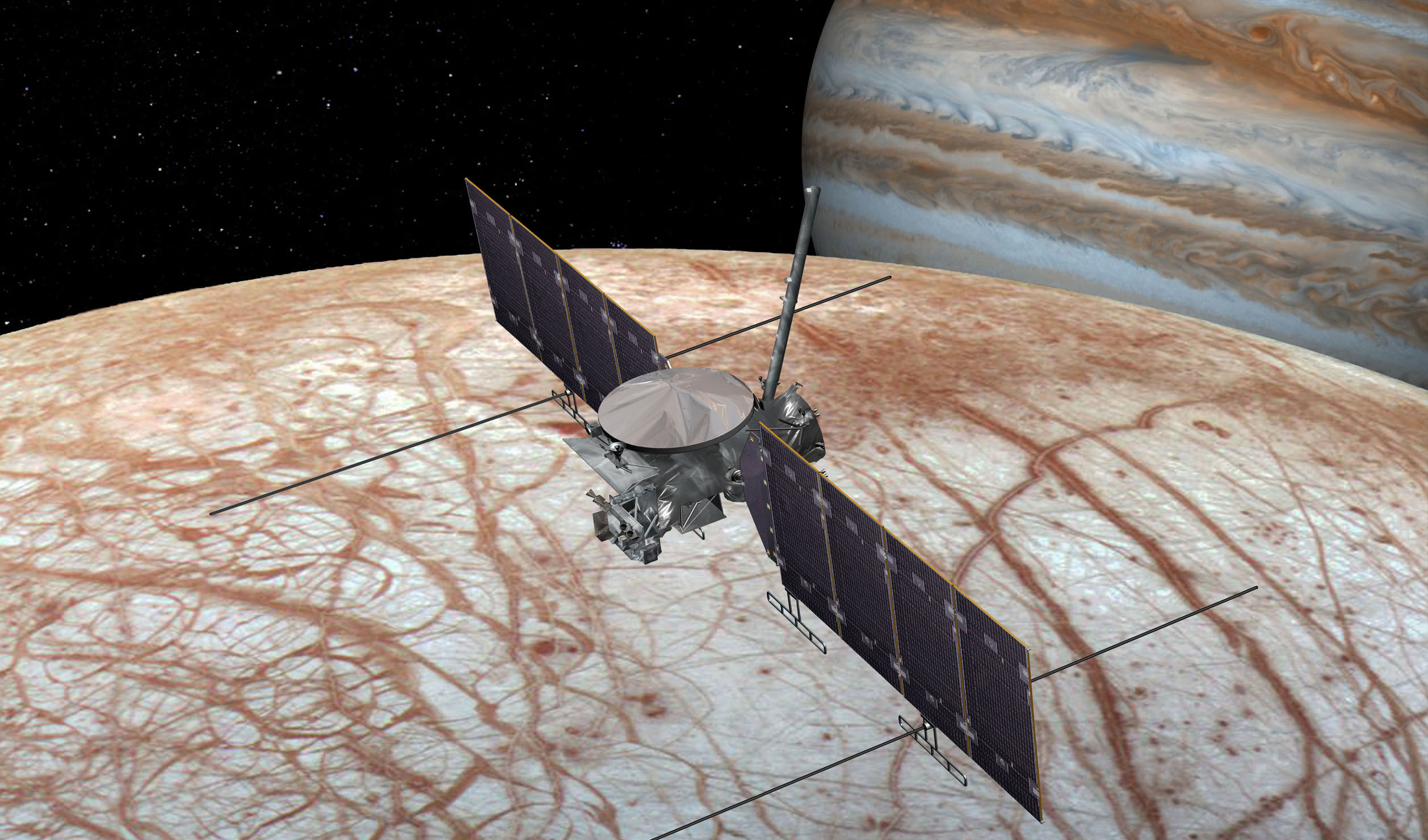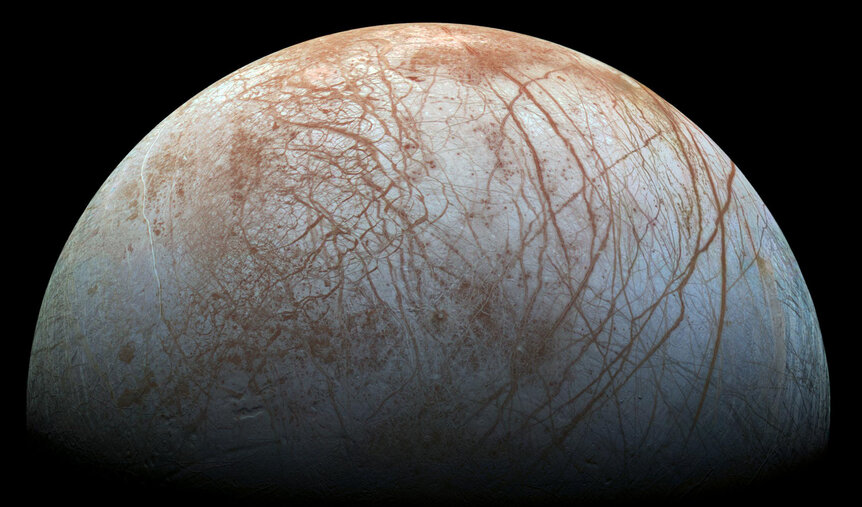Create a free profile to get unlimited access to exclusive videos, sweepstakes, and more!
NASA is officially going to Europa, with eyes toward a 2023 launch

When NASA thinks (hypothetical) aliens, their eyes are either set on Titan or Europa, and the space agency has just revealed that their Europa Clipper mission is now a go.
This is kind of a tremendous deal. NASA’s official decision means the mission can progress to its next phase. This means the Europa Clipper team can now go ahead and complete the final design, then bring it into reality by constructing the entire spacecraft and science payload before putting it through a series of tests. It will eventually be launched into the cosmos to explore an alien world thought to be hiding an entire ocean — and possibly some sort of life-forms — beneath its icy surface.
“We are all excited about the decision that moves the Europa Clipper mission one key step closer to unlocking the mysteries of this ocean world,” said Thomas Zurbuchen, associate administrator for the Science Mission Directorate at NASA Headquarters. “We are building upon the scientific insights received from the flagship Galileo and Cassini spacecraft and working to advance our understanding of our cosmic origin, and even life elsewhere.”
Europa Clipper will get much closer to Europa than Cassini and Galileo ever did. Made to withstand the killer radiation it’s going to get bombarded with in space, the spacecraft will orbit Jupiter about every two weeks so it can pull off repeated flybys of the frozen orb.
NASA has already decided on the nine instruments that will ride along as Europa Clipper’s science payload. Hi-res images of Europa’s surface are expected from the spacecraft’s cameras and spectrometers, while ice-penetrating radar searches for the liquid ocean believed to lie beneath that thick layer of surface ice. Because scientists are now aware that Europa sometimes spews warm water, a thermal instrument will explore the surface for evidence of any more of these eruptions. Other instruments are meant to stay on the lookout for atmospheric water vapor.
The go-ahead for Europa Clipper comes just a few months after the decision to simplify its magnetometer, which can investigate the Jovian moon’s magnetic field and further prove that there is indeed an ocean under all that ice. The magnetometer will also determine how deep and salty that ocean is and the thickness of the ice above it. While these might sound like routine measurements, such data can help scientists determine whether Europa is habitable. It could change everything we ever thought about astrobiology.
“A magnetometer investigation brings significant value to Europa science and exploration,” Zurbuchen said back in March when the instrument’s design started getting a makeover.
While liquid water (or liquid anything) doesn’t necessarily mean life on a planet besides Earth, as Earthlings, we only have that to go off of. The ingredients for life on Europa could be something completely different. Europa Clipper may launch as soon as 2023, a year before NASA is supposed to send astronauts back to our own moon, so who knows what discoveries will get beamed back to the home planet.
Will we find microbial life? Fossils from an era lost to time? Strange Lovecraftian creatures with eight eyes and 19 tentacles? Who knows. Sci-fi might just end up morphing into science.
(via NASA)















